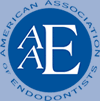Endodontic Surgery
Why would I need Endodontic Microsurgery?
The majority of the time a non-surgical procedure will be sufficient to heal the infected tooth. If for any reason the tooth does not heal or the tooth would be compromised during the retreatment procedure, Dr. Baker could possibly recommend a small surgical procedure called an “Apicoectomy.” Surgery is only an option once a root canal has been completed.
Surgery is performed with our microscopes, which helps locate fractures or cracks within the tooth. Surgery also allows direct visibility for hidden canals or canals that have become closed off or calcified.
Before the surgical procedure has started, local anesthetic is used so the patient is comfortable. After the patient feels “numb,” the anesthetic is reinforced with a stronger anesthetic to ensure complete comfort. A small incision is made in the gum tissue just above the tooth to expose the infected tissue. The damaged tissue is removed along with a small portion of the root. A root-end filling is placed in the tip of the tooth to prevent leakage and a medication is placed into the bone. The small incision area is sutured up which allows the bone and tissues to heal restoring full function. Most patients are able to drive themselves home after the quick procedure.
After the surgery has been completed, there may be some discomfort or slight swelling. Although swelling does not occur with every patient, please do not be alarmed if you experience slight swelling. This process is completely natural and does not indictate an unsuccessful procedure. To reduce swelling, gently apply a cold ice pack. To alleviate any discomfort, an appropriate pain medication will be prescribed following the treatment. If pain persists after the medication has been taken, please call our office.
Patient Care Instructions Following Endodontic Surgery
- Avoid strenuous exercise for the remainder of the day. Physical exertion or heavy lifting should not be performed for 7 days after your surgery. Smoking and alcohol consumption delay wound healing and should be avoided for a minimum of 3 days following surgery.
- Apply an ice pack with slight pressure to your face directly over the surgical site. You should apply the ice pack alternately 20 minutes on and 20 minutes off for the first 8 hours. Frequent heat applications to your face are recommended on the second post surgical day if swelling persists.
- Slight swelling and facial bruising may appear following surgery and will gradually disappear within a few days. Bruising or discoloration does not indicate that the treatment was unsuccessful. Elevate your head with at least two pillows when lying down.
- Do NOT brush the surgical site for at least 10 days following the surgery. Please continue to brush other areas of your mouth. Avoid manipulation of your facial tissues as much as possible. For example please do not raise or retract your cheeks. It is possible to tear loose the stitches accidentally, which will delay wound healing.
- Eat a soft or liquid diet such as soups, yogurt, pasta, blender drinks, or liquid nutritional products. Please try to chew on the opposite side of your mouth. Avoid crunchy, hard or chewy foods until the sutures have been removed. Drink plenty of liquids.
- Post surgical discomfort should be minimal after the second day but the surgical site may remain tender and sore for 4 to 5 days following treatment.
- Follow up visits are necessary for two reasons. First, depending on the type of sutures used, they might need to be removed after proper healing. Second, monitoring adequate healing is very important to Wichita Falls Endodontics. These are very short appointments and usually involve taking a few x-rays.


